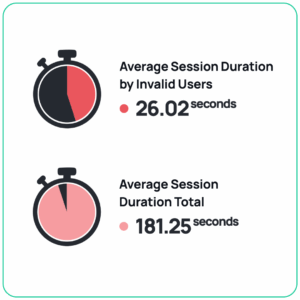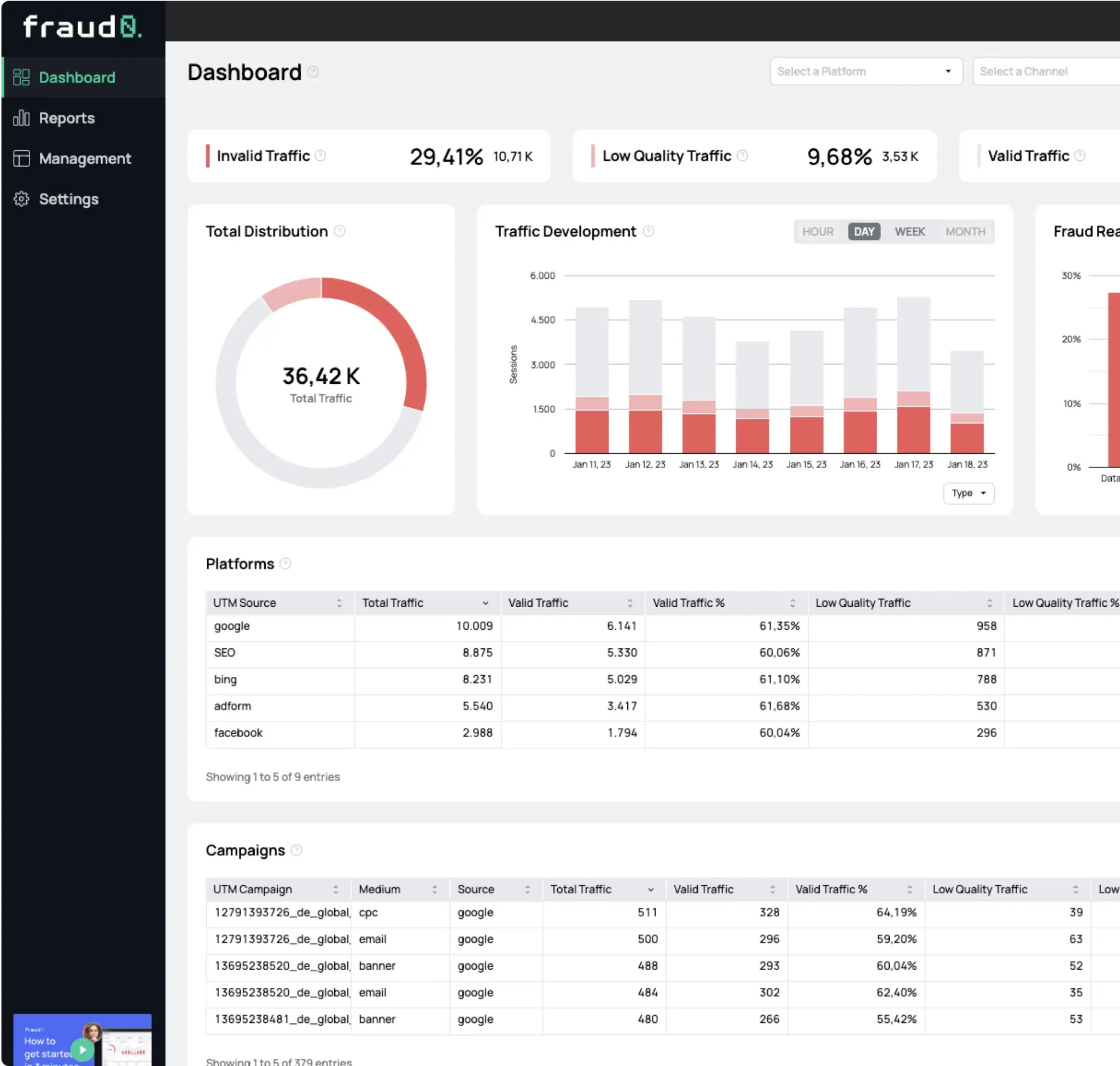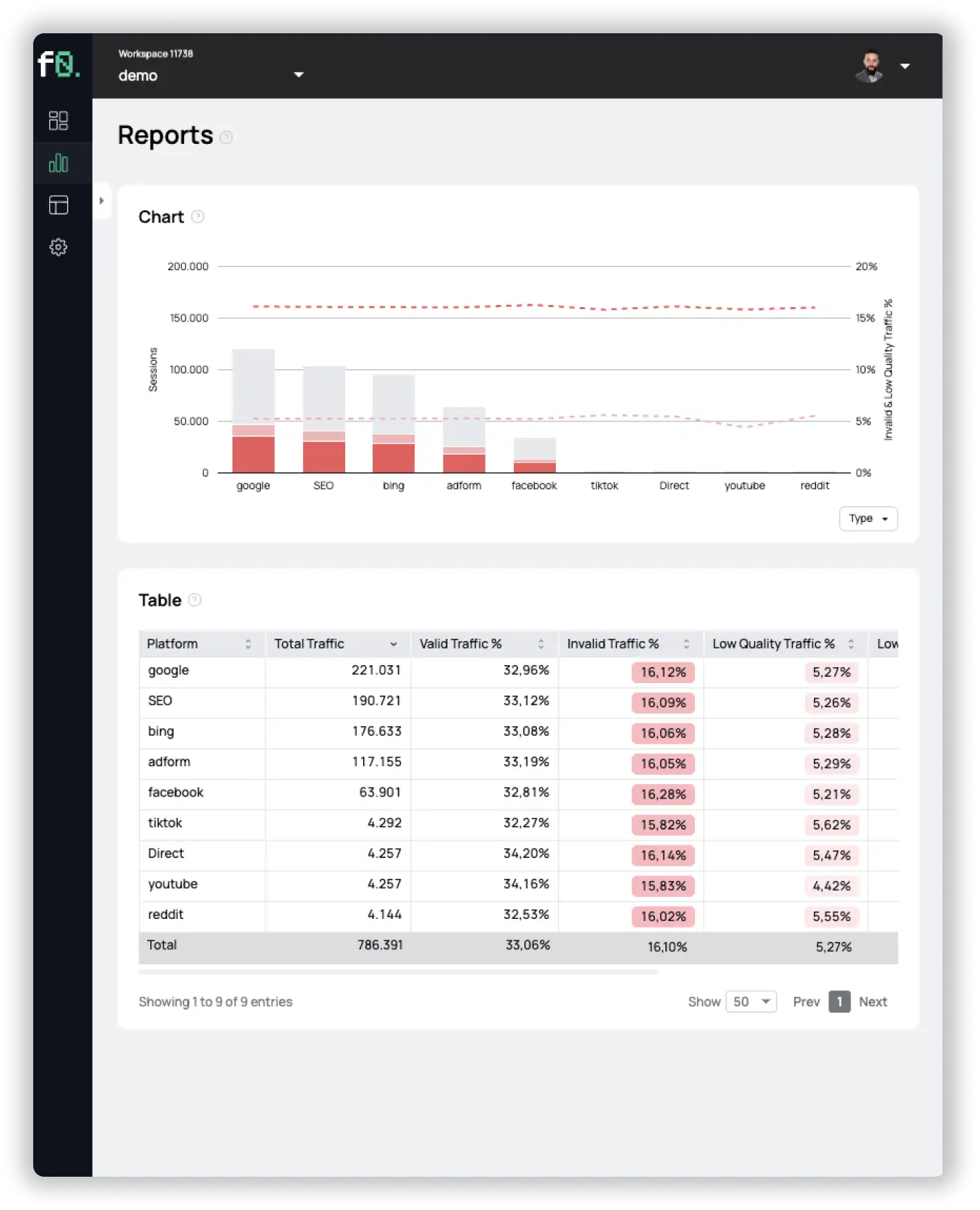- Blog
Click Fraud Trends 2025: How Marketers Can Protect Their PPC Budgets

Cybersecurity Content Specialist

In a digital advertising landscape where global ad spending is forecasted to reach $1.16 trillion in 2025, click fraud remains a persistent threat, draining PPC budgets and skewing performance metrics.
According to fraud0’s latest analysis in the “Unmasking the Shadows 2025” report, which examined 1.2 billion onsite sessions and 10.78 billion ad impressions from October to December 2024, over 21.3% of all traffic is invalid, with bots accounting for a significant portion. This invalid traffic doesn’t just inflate costs—it leads to distorted ROI and misguided decisions. In this comprehensive guide from fraud0, we explore the evolving click fraud trends for 2025, their impact on PPC campaigns, and actionable strategies to safeguard your ad spend. Whether you’re running Google Ads, Bing, or social media PPC, understanding these insights can help you reclaim wasted budget and drive real results.
What is Click Fraud and Why Does It Matter for Marketers?
Click fraud, or click invalidation, occurs when fraudulent or automated clicks on PPC ads are generated without genuine user intent. This can stem from competitors manually clicking to deplete budgets, sophisticated bots simulating human behavior, or even implementation errors in ad setups. At its core, it manipulates key PPC metrics like cost-per-click (CPC), click-through rate (CTR), and conversions, leading to inefficient spending.
- Manual Click Fraud: Often driven by rivals or disgruntled users aiming to exhaust ad budgets.
- Automated Click Fraud: Powered by bots, scripts, or AI, which mimic real interactions to evade detection.
fraud0’s report reveals that invalid users represent 32.0% of total users, viewing only 1.2 pages on average and staying for just 26 seconds per session—compared to 181 seconds for all users. This underscores how bots dilute engagement metrics, making it essential for marketers to prioritize fraud detection. For a deeper dive into common myths surrounding ad fraud, check out our article on the biggest myths about ad fraud.

Top Click Fraud Trends for 2025: What Marketers Need to Know
As AI and automation advance, click fraud is becoming more sophisticated. Projections from industry experts like Juniper Research indicate ad fraud losses could climb to $172 billion by 2028, with click fraud as a major contributor. Drawing from fraud0’s 2025 report, which highlights 21.23% invalid impressions in programmatic ads (15.24% on web and 41.89% in apps), here are the key trends shaping 2025:
- AI-Powered Click Fraud: Intelligent Bots Take Center Stage
AI enables bots to replicate human patterns, such as varying click timings and IP rotations, making detection harder. fraud0’s data shows 14.9% of ad impressions delivered to bots (8.7% confirmed, 6.2% suspected), with returning bots responsible for 17.67% of bot sessions. Expect a doubling of AI-driven attacks in 2025. On platforms like X, experts discuss how these bots exploit target-CPA vulnerabilities in PPC. Learn more about how tools like ChatGPT are ushering in a new era of fraud in our post: ChatGPT – A new era of fraud. - Mobile and CTV Fraud: Emerging Attack Vectors
Mobile ads are increasingly targeted, with app-install fraud on the rise. fraud0’s insights show higher invalid rates in app placements (41.89%), emphasizing the need for cross-device monitoring. For specifics on mobile app fraud, read our article: Ad Fraud in Mobile Apps: Are Your Impressions Real?. - Geo-Specific Fraud: Regional Hotspots Intensify
According to Juniper Research, the Asia-Pacific region is expected to be the hardest hit, with ad fraud losses potentially doubling in the coming years. fraud0’s channel breakdown shows Paid Social at 20.64% invalid traffic and Programmatic Display at 19.95%. - Deepfakes and Social Media Scams
Deepfake ads on platforms like Meta often use spoofed domains or devices. Explore device spoofing tactics in our guide: Device Spoofing – What it is and how to protect your ad budget.
For historical context on major schemes like Methbot or VASTFLUX, which highlight evolving tactics, see our compilations: Methbot – How one man made $3 million per day with ad fraud and Biggest ad fraud cases of the past years (2017 – 2023).
The Impact of Click Fraud on PPC Budgets: Real Numbers
fraud0’s report quantifies this: 9.75% of conversions are invalid (7.82% from confirmed bots), and 5.19% of bot users return, amplifying damage. Additionally, 11.6% of impressions involve fraud techniques like pixel stuffing or ad stacking, as detailed in our post: 7 tools and tactics used for click & ad fraud.
How Marketers Can Protect Their PPC Budgets: Practical Strategies
Prevention is key. fraud0’s insights show that cleaning data can reveal true user engagement, with viewability at just 38.53% across impressions. Follow this step-by-step guide:
- Leverage Fraud Detection Tools
Integrate solutions like fraud0’s own platform for real-time bot blocking. These can reduce losses significantly. For self-solved approaches, read: Uncomplicating Digital Ad Fraud with fraud0: How to Solve It Yourself. - Implement Geo-Targeting and Frequency Caps
Limit exposure to high-risk regions and cap clicks per user to curb repeats. - Monitor Metrics Regularly
Track spikes in clicks, high bounce rates, or short sessions using Google Analytics. fraud0’s report emphasizes excluding bots for accurate insights. - Demand Platform Transparency
Opt for certified channels. Avoid pitfalls like retargeting fraud with our guide: Retargeting Fraud – What it is and how to protect your ad budget.Best Practice Checklist:
- Activate IP exclusions for known bot networks.
- Use AI for behavioral analysis.
- Conduct regular audits
For more on why ads.txt falls short, see: Ads.txt – What it is and why it can’t protect you from click fraud.
Protect your PPC budget today! At fraud0, we offer free audits—just start your free trial. Download our full “Unmasking the Shadows 2025” report for deeper insights. Stay ahead by subscribing to our newsletter for the latest fraud trends.

See what’s hidden: from the quality of website traffic to the reality of ad placements. Insights drawn from billions of data points across our customer base in 2024.
- Published: August 25, 2025
- Updated: August 26, 2025
1%, 4%, 36%?




